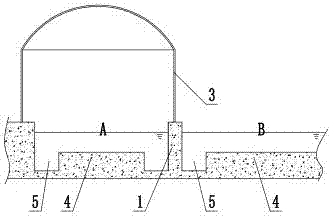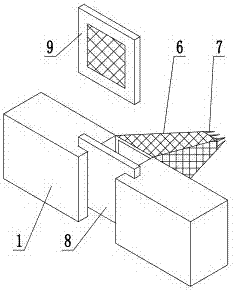Method for culturing swimming crabs for two batches each year
A technology of Portunus trituberculatus and its breeding method, which is applied in the field of breeding of Portunus trituberculatus twice a year, can solve problems such as difficulty in buying, waste in breeding ponds, and inability to meet consumer needs, and achieve high economic benefits and increase utilization. Effect
- Summary
- Abstract
- Description
- Claims
- Application Information
AI Technical Summary
Problems solved by technology
Method used
Image
Examples
Embodiment Construction
[0025] The present invention will be further described below with reference to the embodiments and the accompanying drawings.
[0026] The method for cultivating the swimming crabs three warts in the embodiment twice a year, as attached figure 1 , attached figure 2 The main technical points are as follows.
[0027] (I) Breeding mode:
[0028] The first crop: put the egg-bearing crabs into the nursery area at the end of April to cultivate large-scale seedlings, transfer them to the breeding area from the end of July to the beginning of August, emasculate and retain the females, and breed the finished crabs with 250-350 grams per piece. Launched in January-February of the following year; second crop: put the second batch of egg-carrying crabs into the nursery area at the beginning of August to cultivate large-sized seedlings, and keep the nursery area warm after November to help the juvenile crabs survive the winter until April of the following year. In the middle of the mon...
PUM
 Login to View More
Login to View More Abstract
Description
Claims
Application Information
 Login to View More
Login to View More - R&D
- Intellectual Property
- Life Sciences
- Materials
- Tech Scout
- Unparalleled Data Quality
- Higher Quality Content
- 60% Fewer Hallucinations
Browse by: Latest US Patents, China's latest patents, Technical Efficacy Thesaurus, Application Domain, Technology Topic, Popular Technical Reports.
© 2025 PatSnap. All rights reserved.Legal|Privacy policy|Modern Slavery Act Transparency Statement|Sitemap|About US| Contact US: help@patsnap.com



